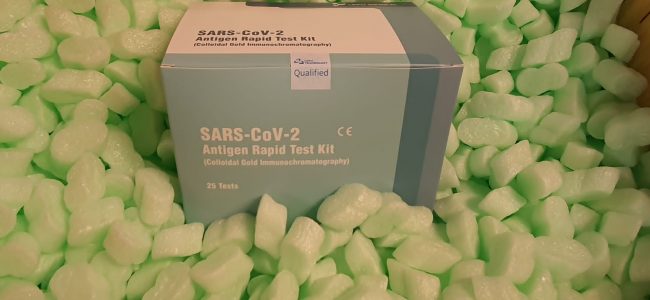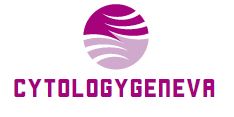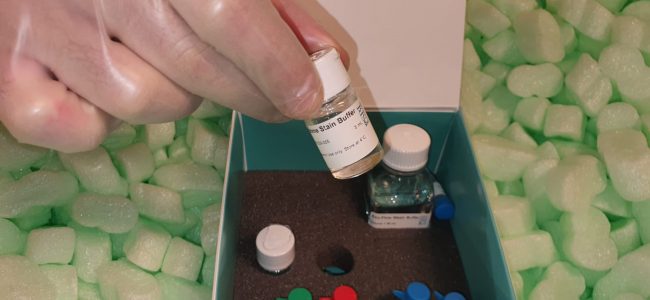Liquid-based preparations (LBPs) have largely changed conventional Papanicolaou smears (CPS) for cervical samples within the United States and in lots of different industrialized international locations. The two FDA-approved LBP at present in use embody ThinPrep (TP), (Hologic Inc., Bedford, MA) and SurePath (SP), (BD Diagnostic, Burlington, NC). Split-sample and direct-to-vial research have proven that LBPs present an general enchancment in pattern assortment and processing
scale back artifacts that intrude in prognosis, are extra delicate, might be utilized for ancillary checks and are a cost-effective alternative for CPS. Comparative analyses of diagnostic accuracy point out that LBPs carry out a minimum of in addition to CPS. However, the added benefits of standardized, automated preparations and screening, lowered unsatisfactory fee, improved specimen adequacy and means to carry out human papillomavirus (HPV) check, are sufficient to proceed use of LBP. The cytologic options in LBP are just like CPS with refined variations, notably in background info.
There are additionally refined variations between the 2 LBPs, SP and TP, that are reflective of completely different sampling gadgets, assortment media, and processing methods. Architecturally, LBP exhibits smaller cell clusters and sheets and extra dyscohesion. Cytologically, enhanced nuclear options and smaller cell measurement are extra distinguished.
Advances in liquid-based Papanicolaou’s (Pap) check have result in well-defined affected person administration tips by the American Society for Colposcopy and Cervical Pathology. Herein, we review these features of Pap check together with, morphology, automation, ancillary checks (HPV and immunochemistry), pertinent QA/QC screens, affected person administration tips, and review of pertinent literature.
After an intense interval of laboratory coaching, a cohort of 10,233 present and seeded irregular slides have been labeled initially by FPGS. Manual screening and reclassification blinded to the FPGS outcomes have been then carried out. Any adequacy and/or cytodiagnostic discrepancy between the two screening strategies subsequently was resolved by way of a consensus course of (fact).
The efficiency of every technique’s adequacy and cytodiagnosis vis-a-vis the reality was established. The sensitivity and specificity of every technique at Four cytodiagnostic thresholds (atypical squamous cells of undetermined significance or worse [ASC-US+], low-grade squamous intraepithelial lesion or worse [LSIL+], high-grade squamous intraepithelial lesion or worse [HSIL+], and carcinoma) have been in contrast. The false-negative fee for every cytodiagnosis was decided.
Assessment of handbook workload limits in gynecologic cytology: reconciling knowledge from Three main potential trials of automated screening gadgets.
Previous potential research have proven completely different outcomes when evaluating automated and handbook screening of gynecologic cytology. The outcomes of Three massive potential research have been reviewed and relative sensitivity used as a gold normal. No vital variations could possibly be proven in relative sensitivity between the ThinPrep Imaging System and the FocalPoint GS Imaging System (P>> .05). When handbook screening was restricted to lower than 6 hours per day
50 or fewer slides per day, and a minimum of 6 minutes per slide (<10 slides/h), the relative sensitivity for automation was considerably decrease for atypical squamous cells of undetermined significance and above (ASC+) (0.81; 95% confidence interval [CI], 0.79-0.83) than when handbook screening was not restricted (1.07; 95% CI, 1.03-1.10).
All Three websites that screened 10 or extra slides per hour manually had a relative sensitivity for automation that was considerably increased for high-grade squamous intraepithelial lesions and above (HSIL+) than for the remaining teams who screened lower than 10 slides per hour (1.40 [95% CI, 1.22-1.60] vs 0.97 [95% CI, 0.95-1.00]). These outcomes recommend that location discovering of abnormalities (ASC+) could also be extra strongly related to time spent screening per day,
whereas classification/interpretation expertise (HSIL+) could rely on time spent on a person case. There is not any proof that automated screening gadgets are extra delicate than handbook screening carried out at decrease well-defined workloads. More restricted workloads (≤41 slides/d, ≤4.5 h/d) for handbook screening could carry out considerably higher than automated screening gadgets as measured by histologic cervical intraepithelial neoplasia 2 and above.
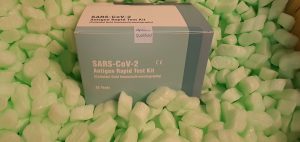
The function of monitoring interpretive charges, concordance between cytotechnologist and pathologist interpretations earlier than sign-out, and turnaround time in gynecologic cytology high quality assurance: findings from the College of American Pathologists Gynecologic Cytopathology Quality Consensus Conference working group 1.
The College of American Pathologists (CAP) performed a nationwide survey of gynecologic cytology high quality assurance (QA) practices. Experts in gynecologic cytology have been requested to affix 5 working teams that studied the survey knowledge on completely different features of QA. Evaluating the survey knowledge and follow-up questions on-line, along with a review of pertinent literature, the working teams developed a collection of preliminary statements on good laboratory practices in cytology QA. These have been offered at a consensus convention and digital voting occurred.
To consider a set of QA screens in gynecologic cytology. Working group 1 evaluated (1) monitoring interpretive fee classes for Papanicolaou checks (Pap checks), (2) concordance of cytotechnologist and pathologist interpretations earlier than sign-out, and (3) turnaround time for Pap checks. The statements are primarily based on a survey of gynecologic cytology QA observe patterns and of opinions from working group members and consensus convention attendees.
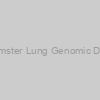 Hamster Lung Genomic DNA |
|
GA-601 |
Zyagen |
0.1mg |
EUR 177 |
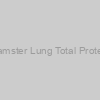 Hamster Lung Total Protein |
|
AT-601 |
Zyagen |
1mg |
EUR 153 |
 Hamster Lung Frozen Sections |
|
AF-601 |
Zyagen |
10 slides |
EUR 240 |
 Hamster Lung Paraffin Sections |
|
AP-601 |
Zyagen |
10 slides |
EUR 228 |
 Hamster Lung Cancer Marker ELISA Kit |
|
MBS019836-10x96StripWells |
MyBiosource |
10x96-Strip-Wells |
EUR 6725 |
 Hamster Lung Cancer Marker ELISA Kit |
|
MBS019836-48StripWells |
MyBiosource |
48-Strip-Wells |
EUR 550 |
 Hamster Lung Cancer Marker ELISA Kit |
|
MBS019836-5x96StripWells |
MyBiosource |
5x96-Strip-Wells |
EUR 3420 |
 Hamster Lung Cancer Marker ELISA Kit |
|
MBS019836-96StripWells |
MyBiosource |
96-Strip-Wells |
EUR 765 |
 Hamster Skin cDNA |
|
AD-101 |
Zyagen |
30 reactions |
EUR 243 |
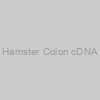 Hamster Colon cDNA |
|
AD-311 |
Zyagen |
30 reactions |
EUR 243 |
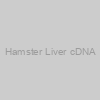 Hamster Liver cDNA |
|
AD-314 |
Zyagen |
30 reactions |
EUR 243 |
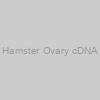 Hamster Ovary cDNA |
|
AD-406 |
Zyagen |
30 reactions |
EUR 243 |
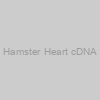 Hamster Heart cDNA |
|
AD-801 |
Zyagen |
30 reactions |
EUR 243 |
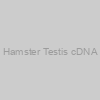 Hamster Testis cDNA |
|
AD-401 |
Zyagen |
30 reactions |
EUR 243 |
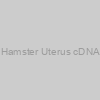 Hamster Uterus cDNA |
|
AD-411 |
Zyagen |
30 reactions |
EUR 243 |
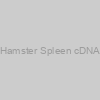 Hamster Spleen cDNA |
|
AD-701 |
Zyagen |
30 reactions |
EUR 243 |
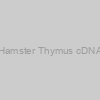 Hamster Thymus cDNA |
|
AD-702 |
Zyagen |
30 reactions |
EUR 243 |
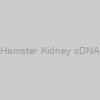 Hamster Kidney cDNA |
|
AD-901 |
Zyagen |
30 reactions |
EUR 243 |
 Hamster Stomach cDNA |
|
AD-302 |
Zyagen |
30 reactions |
EUR 243 |
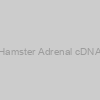 Hamster Adrenal cDNA |
|
AD-501 |
Zyagen |
30 reactions |
EUR 243 |
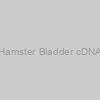 Hamster Bladder cDNA |
|
AD-902 |
Zyagen |
30 reactions |
EUR 243 |
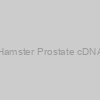 Hamster Prostate cDNA |
|
AD-408 |
Zyagen |
30 reactions |
EUR 243 |
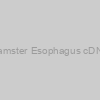 Hamster Esophagus cDNA |
|
AD-301 |
Zyagen |
30 reactions |
EUR 243 |
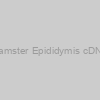 Hamster Epididymis cDNA |
|
AD-402 |
Zyagen |
30 reactions |
EUR 243 |
 Hamster Kruppel Like Factor 2, Lung ELISA Kit |
|
MBS079897-10x96StripWells |
MyBiosource |
10x96-Strip-Wells |
EUR 6725 |
 Hamster Kruppel Like Factor 2, Lung ELISA Kit |
|
MBS079897-48StripWells |
MyBiosource |
48-Strip-Wells |
EUR 550 |
 Hamster Kruppel Like Factor 2, Lung ELISA Kit |
|
MBS079897-5x96StripWells |
MyBiosource |
5x96-Strip-Wells |
EUR 3420 |
 Hamster Kruppel Like Factor 2, Lung ELISA Kit |
|
MBS079897-96StripWells |
MyBiosource |
96-Strip-Wells |
EUR 765 |
 Nav2.1/β1/Contactin Stable Chinese Hamster Lung Cell Line |
|
T3030 |
ABM |
1x10^6 cells / 1.0 ml |
EUR 3950 |
 Hamster Skeletal Muscles cDNA |
|
AD-102 |
Zyagen |
30 reactions |
EUR 243 |
 Hamster Small Intestine, Ileum cDNA |
|
AD-309 |
Zyagen |
30 reactions |
EUR 243 |
 ELISA Kit) Hamster Kita-Kyushu Lung Cancer Antigen 1 (CXORF61) ELISA Kit |
|
MBS9907616-10x96StripWells |
MyBiosource |
10x96-Strip-Wells |
EUR 6725 |
 ELISA Kit) Hamster Kita-Kyushu Lung Cancer Antigen 1 (CXORF61) ELISA Kit |
|
MBS9907616-48StripWells |
MyBiosource |
48-Strip-Wells |
EUR 550 |
 ELISA Kit) Hamster Kita-Kyushu Lung Cancer Antigen 1 (CXORF61) ELISA Kit |
|
MBS9907616-5x96StripWells |
MyBiosource |
5x96-Strip-Wells |
EUR 3420 |
 ELISA Kit) Hamster Kita-Kyushu Lung Cancer Antigen 1 (CXORF61) ELISA Kit |
|
MBS9907616-96StripWells |
MyBiosource |
96-Strip-Wells |
EUR 765 |
 Hamster Small Intestine, Jejunum cDNA |
|
AD-308 |
Zyagen |
30 reactions |
EUR 243 |
 Hamster Small Intestine, Duodenum cDNA |
|
AD-307 |
Zyagen |
30 reactions |
EUR 243 |
 ELISA Kit) Hamster Tumor Marker DR-70 for Lung Cancer (DR-70TM) ELISA Kit |
|
MBS9368029-10x96StripWells |
MyBiosource |
10x96-Strip-Wells |
EUR 6725 |
 ELISA Kit) Hamster Tumor Marker DR-70 for Lung Cancer (DR-70TM) ELISA Kit |
|
MBS9368029-48StripWells |
MyBiosource |
48-Strip-Wells |
EUR 550 |
 ELISA Kit) Hamster Tumor Marker DR-70 for Lung Cancer (DR-70TM) ELISA Kit |
|
MBS9368029-5x96StripWells |
MyBiosource |
5x96-Strip-Wells |
EUR 3420 |
 ELISA Kit) Hamster Tumor Marker DR-70 for Lung Cancer (DR-70TM) ELISA Kit |
|
MBS9368029-96StripWells |
MyBiosource |
96-Strip-Wells |
EUR 765 |
 Hamster Palate/Lung and Nasal Epithelium Associated Protein ELISA Kit |
|
MBS047423-10x96StripWells |
MyBiosource |
10x96-Strip-Wells |
EUR 6725 |
 Hamster Palate/Lung and Nasal Epithelium Associated Protein ELISA Kit |
|
MBS047423-48StripWells |
MyBiosource |
48-Strip-Wells |
EUR 550 |
 Hamster Palate/Lung and Nasal Epithelium Associated Protein ELISA Kit |
|
MBS047423-5x96StripWells |
MyBiosource |
5x96-Strip-Wells |
EUR 3420 |
 Hamster Palate/Lung and Nasal Epithelium Associated Protein ELISA Kit |
|
MBS047423-96StripWells |
MyBiosource |
96-Strip-Wells |
EUR 765 |
 Hamster Tissue cDNA Panel, any 10 Tissues |
|
AD-010 |
Zyagen |
10x10 reactions |
EUR 1294 |
 ELISA Kit) Hamster Metastasis-Associated Lung Adenocarcinoma Transcript 1 (MALAT1) ELISA Kit |
|
MBS9353330-10x96StripWells |
MyBiosource |
10x96-Strip-Wells |
EUR 6725 |
 ELISA Kit) Hamster Metastasis-Associated Lung Adenocarcinoma Transcript 1 (MALAT1) ELISA Kit |
|
MBS9353330-48StripWells |
MyBiosource |
48-Strip-Wells |
EUR 550 |
 ELISA Kit) Hamster Metastasis-Associated Lung Adenocarcinoma Transcript 1 (MALAT1) ELISA Kit |
|
MBS9353330-5x96StripWells |
MyBiosource |
5x96-Strip-Wells |
EUR 3420 |
 ELISA Kit) Hamster Metastasis-Associated Lung Adenocarcinoma Transcript 1 (MALAT1) ELISA Kit |
|
MBS9353330-96StripWells |
MyBiosource |
96-Strip-Wells |
EUR 765 |
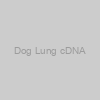 Dog Lung cDNA |
|
DD-601 |
Zyagen |
30 Reactions |
EUR 280 |
 Cat Lung cDNA |
|
FD-601 |
Zyagen |
30 Reactions |
EUR 280 |
 Pig Lung cDNA |
|
PD-601 |
Zyagen |
30 reactions |
EUR 243 |
 Rat Lung cDNA |
|
RD-601 |
Zyagen |
30 reactions |
EUR 243 |
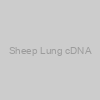 Sheep Lung cDNA |
|
SD-601 |
Zyagen |
30 reactions |
EUR 243 |
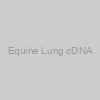 Equine Lung cDNA |
|
ED-601 |
Zyagen |
30 reactions |
EUR 319 |
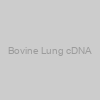 Bovine Lung cDNA |
|
BD-601 |
Zyagen |
30 reactions |
EUR 243 |
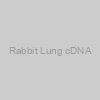 Rabbit Lung cDNA |
|
TD-601 |
Zyagen |
30 reactions |
EUR 243 |
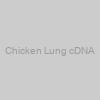 Chicken Lung cDNA |
|
CD-601 |
Zyagen |
30 reactions |
EUR 243 |
 MiniPig Lung cDNA |
|
ND-601 |
Zyagen |
30 reactions |
EUR 358 |
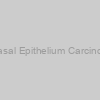 Hamster Short Palate, Lung and Nasal Epithelium Carcinoma Associated Protein 2 ELISA Kit |
|
MBS047970-10x96StripWells |
MyBiosource |
10x96-Strip-Wells |
EUR 6725 |
 Hamster Short Palate, Lung and Nasal Epithelium Carcinoma Associated Protein 2 ELISA Kit |
|
MBS047970-48StripWells |
MyBiosource |
48-Strip-Wells |
EUR 550 |
 Hamster Short Palate, Lung and Nasal Epithelium Carcinoma Associated Protein 2 ELISA Kit |
|
MBS047970-5x96StripWells |
MyBiosource |
5x96-Strip-Wells |
EUR 3420 |
 Hamster Short Palate, Lung and Nasal Epithelium Carcinoma Associated Protein 2 ELISA Kit |
|
MBS047970-96StripWells |
MyBiosource |
96-Strip-Wells |
EUR 765 |
 Hamster Short Palate, Lung and Nasal Epithelium Carcinoma Associated Protein 3 ELISA Kit |
|
MBS077958-10x96StripWells |
MyBiosource |
10x96-Strip-Wells |
EUR 6725 |
 Hamster Short Palate, Lung and Nasal Epithelium Carcinoma Associated Protein 3 ELISA Kit |
|
MBS077958-48StripWells |
MyBiosource |
48-Strip-Wells |
EUR 550 |
 Hamster Short Palate, Lung and Nasal Epithelium Carcinoma Associated Protein 3 ELISA Kit |
|
MBS077958-5x96StripWells |
MyBiosource |
5x96-Strip-Wells |
EUR 3420 |
 Hamster Short Palate, Lung and Nasal Epithelium Carcinoma Associated Protein 3 ELISA Kit |
|
MBS077958-96StripWells |
MyBiosource |
96-Strip-Wells |
EUR 765 |
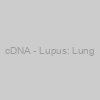 cDNA - Lupus: Lung |
|
C1236152Lup |
Biochain |
40 reactions |
EUR 811 |
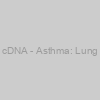 cDNA - Asthma: Lung |
|
C1236152Ld-1 |
Biochain |
40 reactions |
EUR 989 |
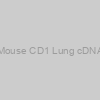 Mouse CD1 Lung cDNA |
|
MD-601 |
Zyagen |
30 reactions |
EUR 243 |
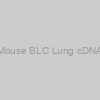 Mouse BLC Lung cDNA |
|
MD-601-BLC |
Zyagen |
30 reactions |
EUR 280 |
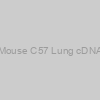 Mouse C57 Lung cDNA |
|
MD-601-C57 |
Zyagen |
30 reactions |
EUR 280 |
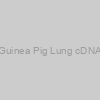 Guinea Pig Lung cDNA |
|
GD-601 |
Zyagen |
30 reactions |
EUR 243 |
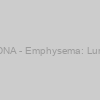 cDNA - Emphysema: Lung |
|
C1236152Ld-3 |
Biochain |
40 reactions |
EUR 989 |
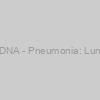 cDNA - Pneumonia: Lung |
|
C1236152Ld-4 |
Biochain |
40 reactions |
EUR 989 |
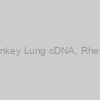 Monkey Lung cDNA, Rhesus |
|
UD-601 |
Zyagen |
30 reactions |
EUR 316 |
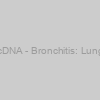 cDNA - Bronchitis: Lung |
|
C1236152Ld-2 |
Biochain |
40 reactions |
EUR 989 |
 ELISA Kit) Hamster Long Palate, Lung and Nasal Epithelium Carcinoma Associated Protein 3 (SPLUNC3) ELISA Kit |
|
MBS9343687-10x96StripWells |
MyBiosource |
10x96-Strip-Wells |
EUR 6725 |
 ELISA Kit) Hamster Long Palate, Lung and Nasal Epithelium Carcinoma Associated Protein 3 (SPLUNC3) ELISA Kit |
|
MBS9343687-48StripWells |
MyBiosource |
48-Strip-Wells |
EUR 550 |
 ELISA Kit) Hamster Long Palate, Lung and Nasal Epithelium Carcinoma Associated Protein 3 (SPLUNC3) ELISA Kit |
|
MBS9343687-5x96StripWells |
MyBiosource |
5x96-Strip-Wells |
EUR 3420 |
 ELISA Kit) Hamster Long Palate, Lung and Nasal Epithelium Carcinoma Associated Protein 3 (SPLUNC3) ELISA Kit |
|
MBS9343687-96StripWells |
MyBiosource |
96-Strip-Wells |
EUR 765 |
 ELISA Kit) Hamster Short Palate, Lung and Nasal Epithelium Carcinoma Associated Protein 1 (SPLUNC1) ELISA Kit |
|
MBS9365309-10x96StripWells |
MyBiosource |
10x96-Strip-Wells |
EUR 6725 |
 ELISA Kit) Hamster Short Palate, Lung and Nasal Epithelium Carcinoma Associated Protein 1 (SPLUNC1) ELISA Kit |
|
MBS9365309-48StripWells |
MyBiosource |
48-Strip-Wells |
EUR 550 |
 ELISA Kit) Hamster Short Palate, Lung and Nasal Epithelium Carcinoma Associated Protein 1 (SPLUNC1) ELISA Kit |
|
MBS9365309-5x96StripWells |
MyBiosource |
5x96-Strip-Wells |
EUR 3420 |
 ELISA Kit) Hamster Short Palate, Lung and Nasal Epithelium Carcinoma Associated Protein 1 (SPLUNC1) ELISA Kit |
|
MBS9365309-96StripWells |
MyBiosource |
96-Strip-Wells |
EUR 765 |
 ELISA Kit) Hamster Long Palate, Lung and Nasal Epithelium Carcinoma Associated Protein 2 (SPLUNC2) ELISA Kit |
|
MBS9349618-10x96StripWells |
MyBiosource |
10x96-Strip-Wells |
EUR 6725 |
 ELISA Kit) Hamster Long Palate, Lung and Nasal Epithelium Carcinoma Associated Protein 2 (SPLUNC2) ELISA Kit |
|
MBS9349618-48StripWells |
MyBiosource |
48-Strip-Wells |
EUR 550 |
 ELISA Kit) Hamster Long Palate, Lung and Nasal Epithelium Carcinoma Associated Protein 2 (SPLUNC2) ELISA Kit |
|
MBS9349618-5x96StripWells |
MyBiosource |
5x96-Strip-Wells |
EUR 3420 |
 ELISA Kit) Hamster Long Palate, Lung and Nasal Epithelium Carcinoma Associated Protein 2 (SPLUNC2) ELISA Kit |
|
MBS9349618-96StripWells |
MyBiosource |
96-Strip-Wells |
EUR 765 |
 ELISA Kit) Hamster Long Palate, Lung and Nasal Epithelium Carcinoma Associated Protein 1 (SPLUNC1) ELISA Kit |
|
MBS9348224-10x96StripWells |
MyBiosource |
10x96-Strip-Wells |
EUR 6725 |
 ELISA Kit) Hamster Long Palate, Lung and Nasal Epithelium Carcinoma Associated Protein 1 (SPLUNC1) ELISA Kit |
|
MBS9348224-48StripWells |
MyBiosource |
48-Strip-Wells |
EUR 550 |
 ELISA Kit) Hamster Long Palate, Lung and Nasal Epithelium Carcinoma Associated Protein 1 (SPLUNC1) ELISA Kit |
|
MBS9348224-5x96StripWells |
MyBiosource |
5x96-Strip-Wells |
EUR 3420 |
 ELISA Kit) Hamster Long Palate, Lung and Nasal Epithelium Carcinoma Associated Protein 1 (SPLUNC1) ELISA Kit |
|
MBS9348224-96StripWells |
MyBiosource |
96-Strip-Wells |
EUR 765 |
 Monkey Lung cDNA, Cynomolgus |
|
KD-601 |
Zyagen |
30 reactions |
EUR 316 |
 Hamster Krebs Von Den Lungen 6 ELISA Kit |
|
MBS005751-10x96StripWells |
MyBiosource |
10x96-Strip-Wells |
EUR 6725 |
 Hamster Krebs Von Den Lungen 6 ELISA Kit |
|
MBS005751-48StripWells |
MyBiosource |
48-Strip-Wells |
EUR 550 |
 Hamster Krebs Von Den Lungen 6 ELISA Kit |
|
MBS005751-5x96StripWells |
MyBiosource |
5x96-Strip-Wells |
EUR 3420 |
 Hamster Krebs Von Den Lungen 6 ELISA Kit |
|
MBS005751-96StripWells |
MyBiosource |
96-Strip-Wells |
EUR 765 |
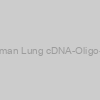 Human Lung cDNA-Oligo-dT |
|
HD-601 |
Zyagen |
30 reactions |
EUR 280 |
 Rat Lung cDNA-Random Primer |
|
RD-601-RH |
Zyagen |
30 reactions |
EUR 243 |
 Human Lung cDNA-Random Primer |
|
HD-601-HR |
Zyagen |
30 reactions |
EUR 280 |
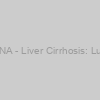 cDNA - Liver Cirrhosis: Lung |
|
C1236152Lcs |
Biochain |
40 reactions |
EUR 802 |
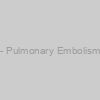 cDNA - Pulmonary Embolism: Lung |
|
C1236152Ld-5 |
Biochain |
40 reactions |
EUR 989 |
 Rat WS Lung cDNA-Oligo-dT |
|
RD-601-WS |
Zyagen |
30 reactions |
EUR 243 |
 Mouse C57 Lung cDNA-Random Primer |
|
MD-601-C57-RH |
Zyagen |
30 reactions |
EUR 280 |
 Mouse CD1 Lung cDNA-Random Primer |
|
MD-601-HR |
Zyagen |
30 reactions |
EUR 243 |
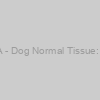 cDNA - Dog Normal Tissue: Lung |
|
C1734152 |
Biochain |
40 reactions |
EUR 424 |
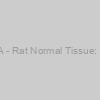 cDNA - Rat Normal Tissue: Lung |
|
C1434152 |
Biochain |
40 reactions |
EUR 424 |
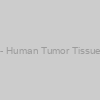 cDNA - Human Tumor Tissue: Lung |
|
C1235152 |
Biochain |
40 reactions |
EUR 636 |
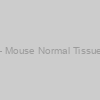 cDNA - Mouse Normal Tissue: Lung |
|
C1334152 |
Biochain |
40 reactions |
EUR 424 |
 Monkey Lung cDNA-Random Primer, Rhesus |
|
UD-601-RH |
Zyagen |
30 reactions |
EUR 316 |
 Monkey Lung cDNA-Random Primer, Cynomolgus |
|
KD-601-RH |
Zyagen |
30 reactions |
EUR 316 |
 cDNA - Human Adult Normal Tissue: Lung |
|
C1234152 |
Biochain |
40 reactions |
EUR 424 |
 Normal Tissue: Lung) cDNA - Monkey (Rhesus) Normal Tissue: Lung |
|
C1534152 |
Biochain |
40 reactions |
EUR 481 |
 cDNA - Human Diabetic Diseased Tissue: Lung |
|
C1236152Dia |
Biochain |
40 reactions |
EUR 802 |
 Normal Tissue: Lung) cDNA - Monkey (Cynomolgus) Normal Tissue: Lung |
|
C1534152-Cy |
Biochain |
40 reactions |
EUR 481 |
) Hamster Mono Anti-Mouse CD3e IgG (Hamster IgG) |
|
MCD003E-M |
Alpha Diagnostics |
100 Tests |
EUR 578.4 |
) Hamster Mono Anti-Mouse CD3z IgG (Hamster IgG) |
|
MCD003Z-M |
Alpha Diagnostics |
100 ug |
EUR 578.4 |
 Hamster IgM |
|
31C-CH0707 |
Fitzgerald |
1 mg |
EUR 492 |
|
Description: Purified Hamster IgM |
 Hamster IgG |
|
31-AH70 |
Fitzgerald |
10 mg |
Ask for price |
|
|
|
Description: Purified Hamster IgG |
 Hamster IgG |
|
MBS537054-INQUIRE |
MyBiosource |
INQUIRE |
Ask for price |
 Serum, Hamster |
|
MBS6003061-5x1mL |
MyBiosource |
5x1mL |
EUR 2175 |
 Hamster Serum |
|
MBS571945-5x1mL |
MyBiosource |
5x1mL |
EUR 575 |
 - Mouse X-ray repair complementing defective repair in Chinese hamster cells 3 (cDNA clone MGC:57978 IMAGE:6404521)) Xrcc3 (GFP-tagged) - Mouse X-ray repair complementing defective repair in Chinese hamster cells 3 (cDNA clone MGC:57978 IMAGE:6404521) |
|
MG202365 |
Origene Technologies GmbH |
10 µg |
Ask for price |
 Tissue cDNA, First Strand, Human Tumor, Lung, BioGenomics |
|
MBS652097-40Tests |
MyBiosource |
40Tests |
EUR 850 |
 Tissue cDNA, First Strand, Human Tumor, Lung, BioGenomics |
|
MBS652097-5x40Tests |
MyBiosource |
5x40Tests |
EUR 3600 |
 - Mouse X-ray repair complementing defective repair in Chinese hamster cells 3 (cDNA clone MGC:57978 IMAGE:6404521),, (10ug)) Xrcc3 (untagged) - Mouse X-ray repair complementing defective repair in Chinese hamster cells 3 (cDNA clone MGC:57978 IMAGE:6404521),, (10ug) |
|
MC206951 |
Origene Technologies GmbH |
10 µg |
Ask for price |
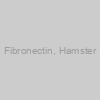 Fibronectin, Hamster |
|
MBS634492-1mg |
MyBiosource |
1mg |
EUR 1090 |
 Fibronectin, Hamster |
|
MBS634492-5x1mg |
MyBiosource |
5x1mg |
EUR 4675 |
 Hamster Fibronectin |
|
MBS135673-1mg |
MyBiosource |
1mg |
EUR 665 |
 Hamster Fibronectin |
|
MBS135673-5x1mg |
MyBiosource |
5x1mg |
EUR 2765 |
 Hamster Fibronectin |
|
MBS480587-1mg |
MyBiosource |
1mg |
EUR 625 |
 Hamster Fibronectin |
|
MBS480587-5x1mg |
MyBiosource |
5x1mg |
EUR 2595 |
) Hamster Mono Anti-Mouse CD25 , Pur. Low Endotoxin (Hamster IgG) |
|
MCD027-M |
Alpha Diagnostics |
100 ug |
EUR 578.4 |
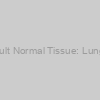 cDNA - Human Adult Normal Tissue: Lung: Left Lower Lobe |
|
C1234155 |
Biochain |
40 reactions |
EUR 424 |
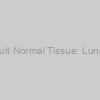 cDNA - Human Adult Normal Tissue: Lung: Left Upper Lobe |
|
C1234156 |
Biochain |
40 reactions |
EUR 424 |
The outcomes of this course of display the present state of observe patterns in gynecologic cytology QA. Monitoring interpretive charges for all Bethesda System classes is probably helpful, and it’s most helpful to watch interpretive charges for cytotechnologists individually and compared to your entire laboratory. Laboratories want to find out what stage of discrepancy between cytotechnologist and pathologist interpretations of Pap checks is necessary to trace.
Laboratories ought to think about formalizing procedures and insurance policies to adjudicate such discrepant interpretations. Turnaround time must be monitored in gynecologic cytology, however particular person laboratories ought to decide how one can measure and use turnaround time internally.
